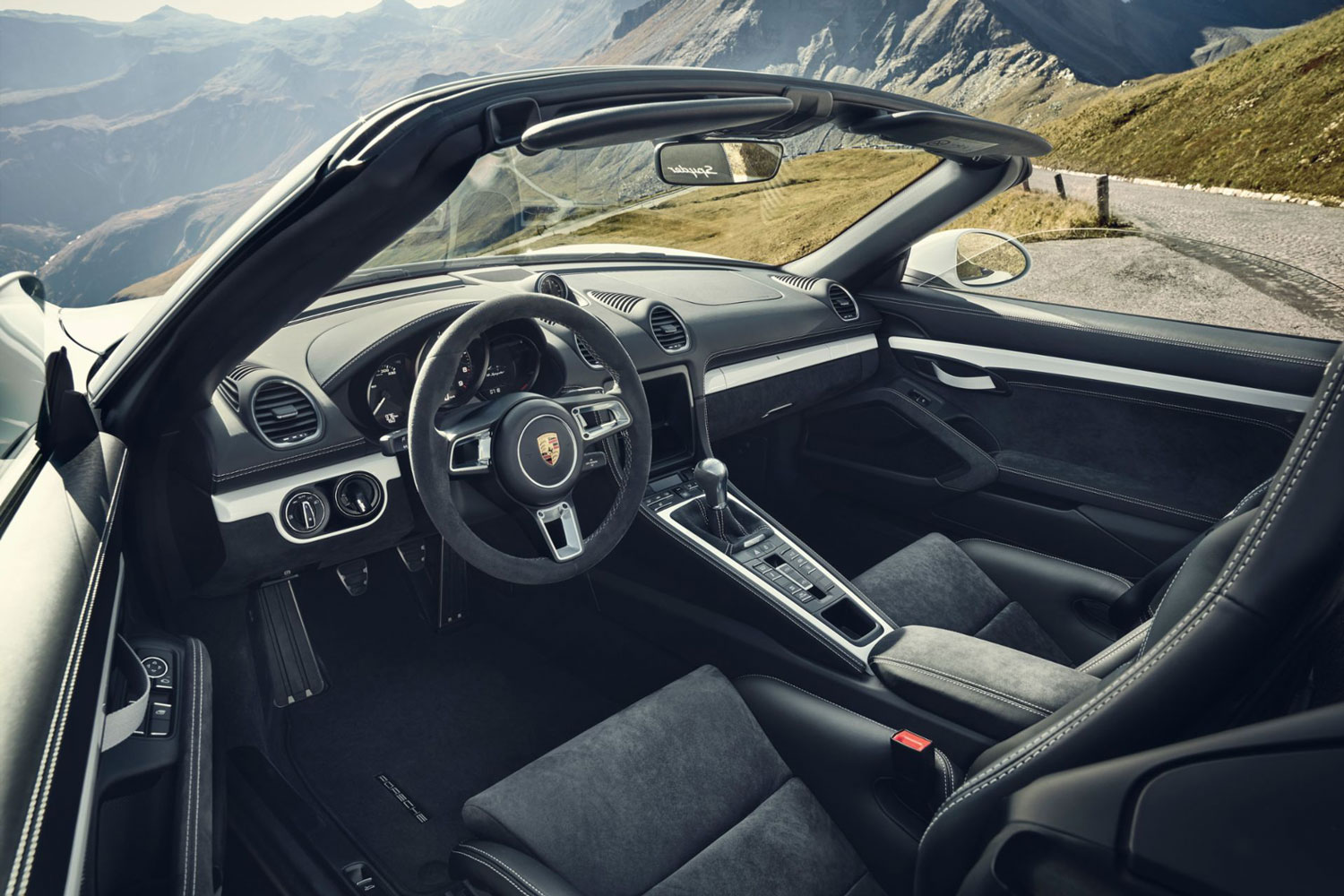What Is Alcantara?
This synthetic, suede-like fabric has become a catchword for luxury car interiors.
 Porsche
Porsche
Chemistry developments have provided an outlet to better living, and as a result the automotive world has a host of new materials to play with when decking out a vehicle’s cabin. Synthetic fabrics that look and feel more premium than traditional leather and vinyl are now commonplace—even outside of the luxury segment. One of the most prominent of these materials is Alcantara, a word that is frequently used when describing high-end interior upholstery across a long list of brands.
What is Alcantara, and why is it so popular? Here’s a look at the details behind this unique fabric.
What Does “Alcantara” Mean?
Alcantara is the brand name for a lab-derived fabric material that was developed in the 1970s, which is why it’s always capitalized when written. The goal was to create something that felt like suede: the super-soft, leather-derived upholstery that was luxurious to the touch, but difficult to keep clean and maintain over the long term.
The word “Alcantara” itself doesn’t mean anything in particular. It refers to the Italian company that commercialized the fabric, which was invented in Japan in 1970. However, it’s also used colloquially in addition to being a brand name (like Kleenex).
What Is Alcantara Made of?
Like many artificial fabrics, Alcantara is a petroleum product—specifically, a mix of harder polyurethane and softer polyester subjected to an elaborate finishing process in order to achieve the softness, texture, and coloring desired by the manufacturer. It's comparable to other artificial suede products, such as Ultrasuede.
Alcantara is completely animal-free, which makes it a popular alternative to suede leather. Also helping its case is that it’s significantly less expensive to create than leather, which provides cost savings to automakers.
Where Is Alcantara Used in a Vehicle?
The primary appeal of Alcantara is how soft it feels as well as how it can improve grip, so it’s primarily deployed in a cabin’s touch points. The most common areas where your hands are likely to encounter Alcantara are the steering wheel and the shift knob, like in the Porsche 718 Spyder’s cabin. That extra grip is also sometimes leveraged in seat inserts for performance vehicles because Alcantara can help prevent sliding during aggressive cornering.
As an added bonus, Alcantara is also resistant to UV exposure. This means it is often found on the dashboard and door panels of a vehicle as well.
What Is it Like to Own Alcantara Vs. Leather or Vinyl?
Alcantara can be more durable than traditional suede, but only if it is properly maintained. Skin oils can break down the material over time, which means it needs to be cleaned on a regular basis. Fortunately, unlike more delicate suede, it is relatively simple to clean with over-the-counter products.
Another advantage of Alcantara over both leather and vinyl is that it doesn’t heat up as much when exposed to direct sunlight. This makes it less likely that you’ll scorch your hands on the steering wheel or shift knob on a hot day.
Written by humans.
Edited by humans.
 Benjamin Hunting
Benjamin HuntingBenjamin Hunting is a writer and podcast host who contributes to a number of newspapers, automotive magazines, and online publications. More than a decade into his career, he enjoys keeping the shiny side up during track days and always has one too many classic vehicle projects partially disassembled in his garage at any given time. Remember, if it's not leaking, it's probably empty.
Related articles
View more related articles